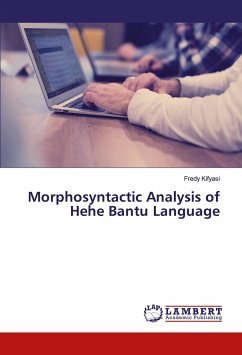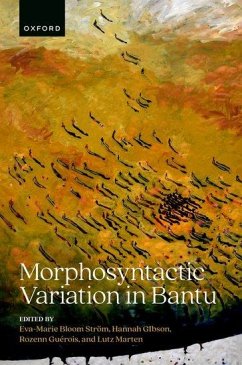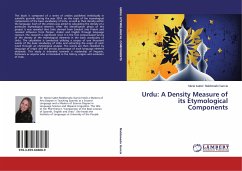
Morphosyntactic Analysis of Hehe Bantu Language
Versandkostenfrei!
Versandfertig in 6-10 Tagen
27,99 €
inkl. MwSt.

PAYBACK Punkte
14 °P sammeln!
Bantu languages from the same Guthrie's group are not only morphologically quite similar to each other, but also there is a considerable more diversity in their patterns of verbal negations than is often believed. Some of this diversity may be the patterns of negations which normalize away variations within and between languages, or under represent distinction. The verb is pivotal in the sentence; it incorporates much information, and may stand alone as a sentence. Nearly all Bantu languages are prodrop. In many languages verbs have six possible pre-stem positions, and since some of these may ...
Bantu languages from the same Guthrie's group are not only morphologically quite similar to each other, but also there is a considerable more diversity in their patterns of verbal negations than is often believed. Some of this diversity may be the patterns of negations which normalize away variations within and between languages, or under represent distinction. The verb is pivotal in the sentence; it incorporates much information, and may stand alone as a sentence. Nearly all Bantu languages are prodrop. In many languages verbs have six possible pre-stem positions, and since some of these may be filled with more than one morph. Between them (morphs), the verbal prefixes and suffixes commonly express negation, relativization, tense, aspect, conditional, subject, object, derivational extensions and mood. This paper compares the patterns of verbal negations in Hehe language and Kiswahili.












